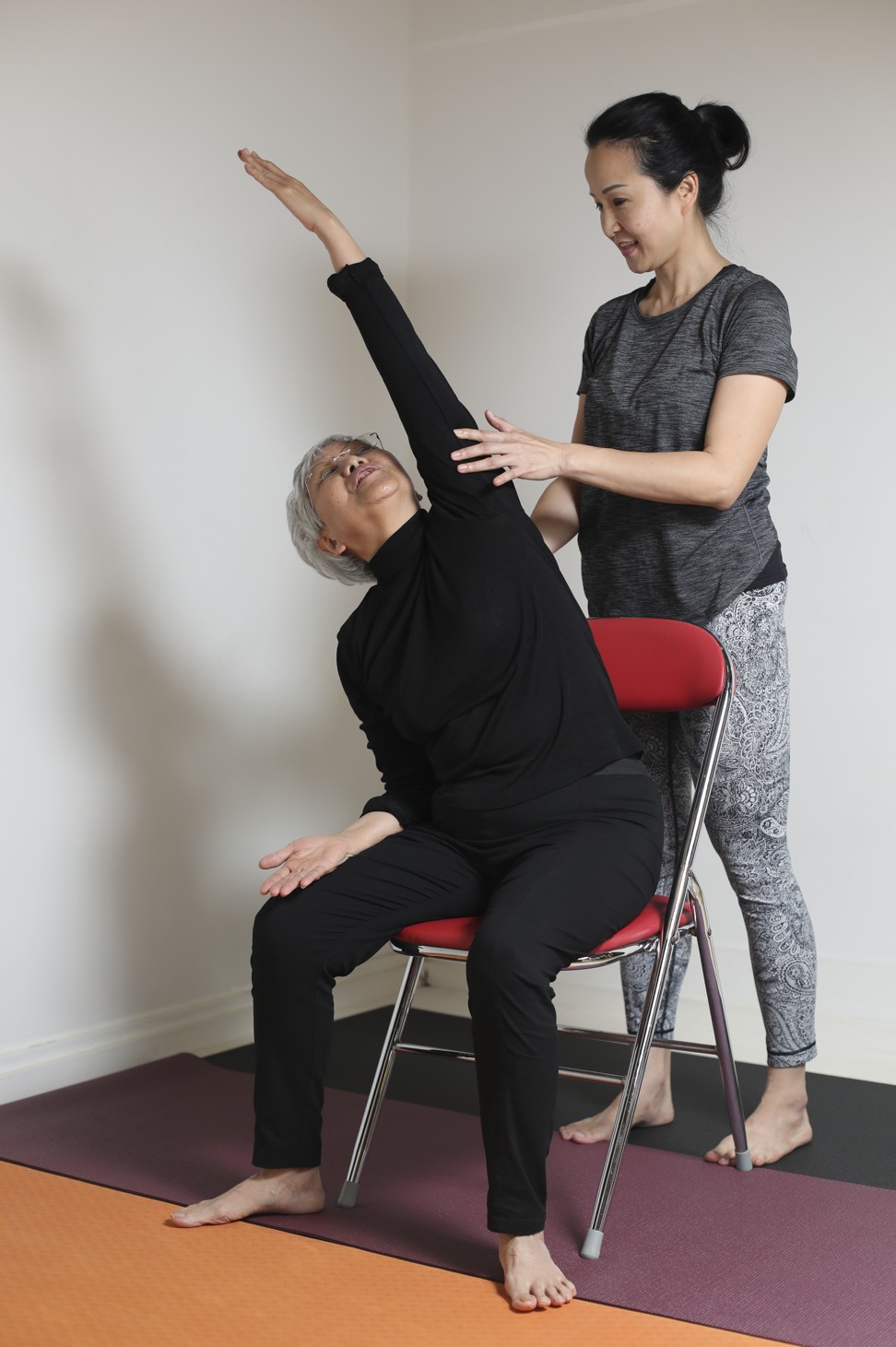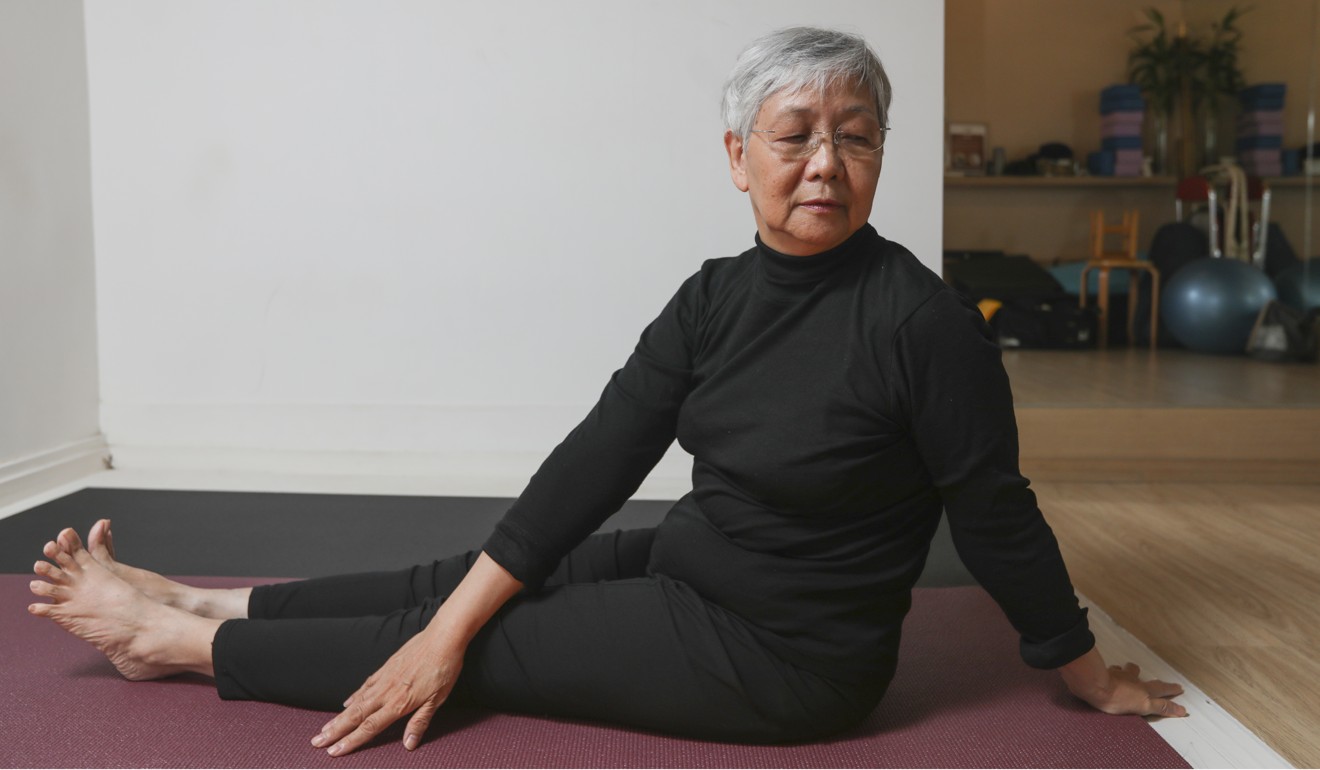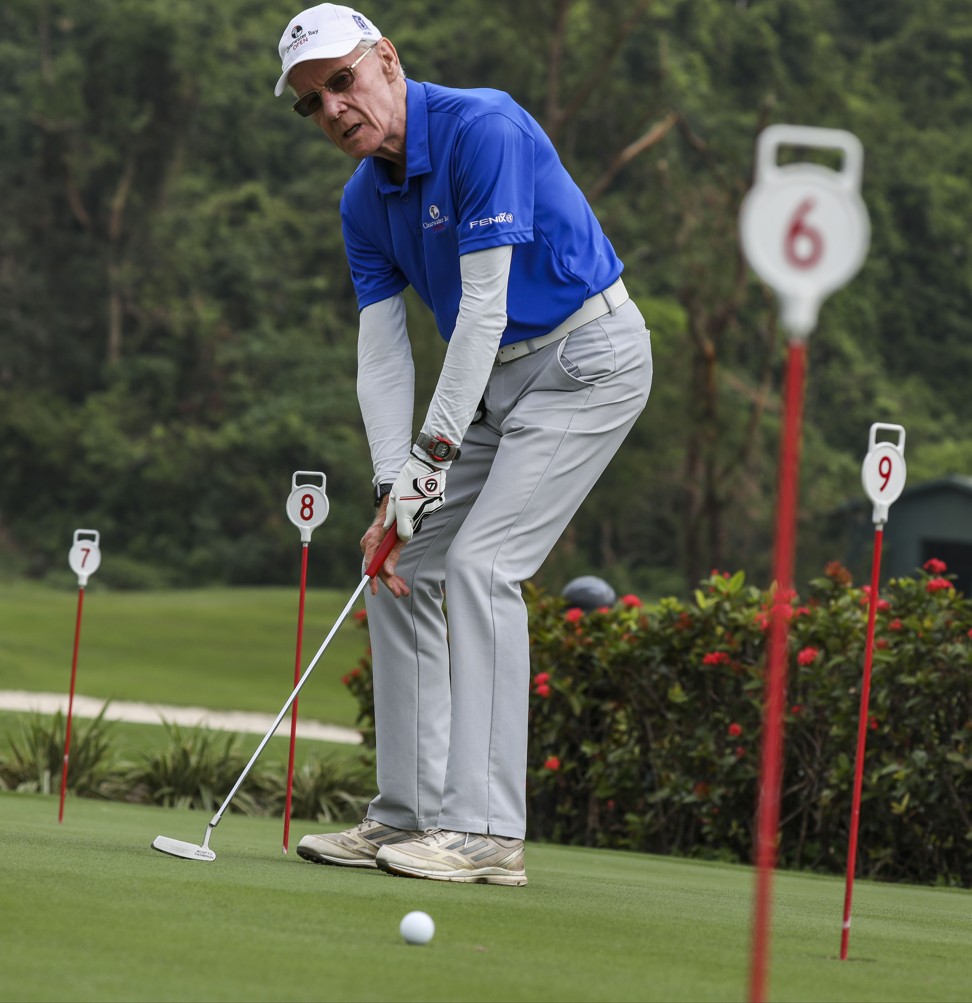
Staying active the key to staying alive longer – and you’re never too old to start exercising
- A 74-year-old who took up yoga, a 75-year-old who plays golf and tennis every week – these elderly Hongkongers practise the active ageing a study recommends
- Exercise can be adapted to cope with most health conditions. Talk to your doctor
If you are looking to finally rest your weary body and do a lot less physically in your twilight years, you may want to rethink your plan.
According to new research from the UK, if you want to prolong your life, staying active is what matters. Published in the British Journal of Sports Medicine, the study found that all physical activities, even light-intensity ones, could significantly reduce an elderly person’s risk of death.
Household chores a good workout for old people, but do not overdo it
At the moment, the World Health Organisation recommends that adults aged 18 and above perform at least 150 minutes of moderate-intensity aerobic physical activity, 75 minutes of vigorous-intensity physical activity, or an equivalent combination of moderate- and vigorous-intensity aerobic physical activity in a week.
It’s also recommended that this activity be carried out in bouts lasting 10 or more minutes. Unfortunately, if you are an elderly person, this amount of exercise can be difficult to achieve.

The study, carried out by researchers at University College London, focused on more than 1,000 men – whose average age was 78 – and found that there was a 15 per cent reduction in all-cause mortality risk for every 1,000 steps a day, regardless of intensity. The researchers also observed that what mattered was the total amount of time the subjects spent exercising and not how the time was divided up.
Of course, the more intense the activity, the lower the mortality risk, but the researchers found that no matter the intensity of their activity, elderly men who kept active had a lower chance of dying than men who were not active at all.
Because the study was observational and not a clinical trial, it cannot prove a causal relationship between physical activity and lower mortality at this stage. Nevertheless, there’s no denying the importance of exercise for elderly people who can tolerate it, says Dr Kevin Tsang, specialist in medicine at Matilda International Hospital, The Peak, in Hong Kong.

“Whether you’re male or female, being physically active has numerous benefits, from improving how your body functions to boosting muscle strength, thus minimising your risk of falls. It can also help you feel more independent and improve your quality of life,” Tsang says.
Every elderly person will have different exercise requirements and restrictions, Tsang adds. For example, those with heart disease or other major health conditions should avoid activities that put additional stress on the body. Those with limited mobility may also be unable to perform certain activities. Whatever your health status, it’s wise to speak to your doctor about what you can and cannot do.
“It’s good to be physically active so long as your body can handle it,” says Tsang. “Even a short walk, gardening, doing a bit of housework, or tai chi – these all count as light exercise but they can have a positive effect on your health, even if you do them in short bouts. They’re also more realistic ways to stay active if you’re elderly.”

Yoga has certainly improved Kitty Lam’s mobility and fitness. Initially, the 74-year-old did not think she could do yoga because she’d had both hips replaced, but since trying it six months ago she has no regrets.
She attends a seniors’ yoga therapy class, led by teachers from Andiappan Yoga Community, at the Tsuen Wan Lok Sin Tong Society for about an hour each week.
“The class is specifically tailored to seniors, so it’s easy to follow. I also practise yoga at home by myself and do tai chi twice a week. I love yoga because it helps me relax, but besides that, it’s helped me overcome pain and stiffness, improved my mobility, given me more energy and made me feel stronger,” Lam says.
Hong Kong seniors take up yoga and discover its many benefits
“It’s good to know that yoga can be practised at any age. I’m not even the oldest one in my class. We have another member who’s 90.”
Another senior for whom age is no barrier to staying active is Bob Lloyd. The 75-year-old fell in love with golf as a young boy in Scotland. He now plays three or four times a month for four-and-a-half hours each time. In addition to golf, Lloyd plays doubles tennis on Saturdays and Sundays for two hours each day, works out at the gym at least once a week, and walks most weekdays for a minimum of 30 minutes.
Whether you’re male or female, being physically active has numerous benefits, from improving how your body functions to boosting muscle strength
The only health problem Lloyd has at the moment is atrial fibrillation; in 2015 he experienced a “transient ischemic attack”, or mini stroke. However, the retired civil engineer says that no cardiac specialist has ever advised him to stop being physically active.
“Golf keeps me moving and focused, while the other activities help me live a balanced lifestyle,” Lloyd says.
“I also volunteer to undertake mobile scoring at the Hong Kong Open golf championships and other events, offering four days’ availability. This involves walking with a group of players for four days consecutively. I feel stronger as a consequence of my fitness regime.”
If you’re elderly and looking to start being physically active, you should adopt an exercise programme that includes aerobic exercises, muscle strengthening exercises and exercises that improve your flexibility, says Gwyneth Hung, who leads the physiotherapy department at Matilda International Hospital.
If you have a history of falls, you should also add balance and agility training and proprioceptive training (exercises that teach your body to control the position of a deficient or an injured joint).

“Beginners should start with low-intensity exercises first,” Hung advises.
“These are activities that cause a noticeable increase in heart rate and breathing. Once you feel comfortable at this level and believe you’re ready for a slightly bigger challenge, you can progress to moderate-intensity activities, followed by vigorous-intensity activities, which cause a big increase in heart rate and breathing.” Just remember to consult your doctor before starting any new activity or exercise regime.
Do not feel that you have to progress from one level to the next within a certain period, and do not compare your progress to that of others. What’s more important is that you’re consistent with your exercise regime and that you do everything possible to minimise your risk of injury.
A 99-year-old yoga teacher’s secrets to keeping the vigour of youth
“Before undertaking any aerobic activity, I suggest doing muscle strengthening exercises to prevent fatigue-related injuries,” says Hung. “I also advise you to do any stretching exercises in a slow, sustained manner, and to avoid ballistic movements altogether.”

